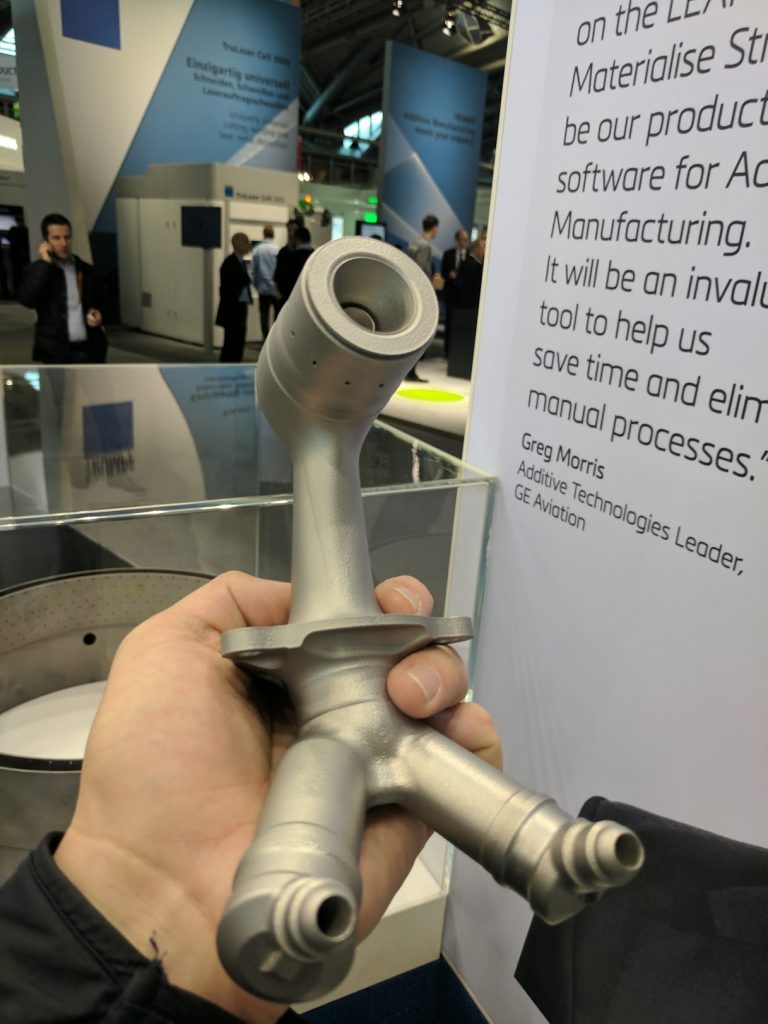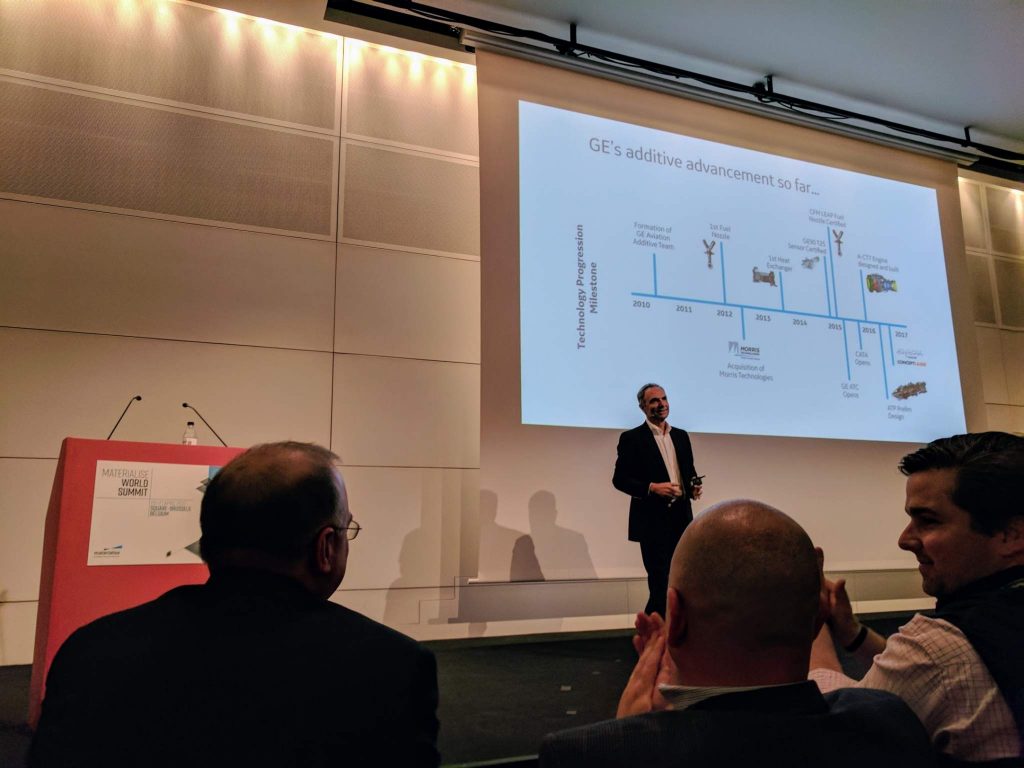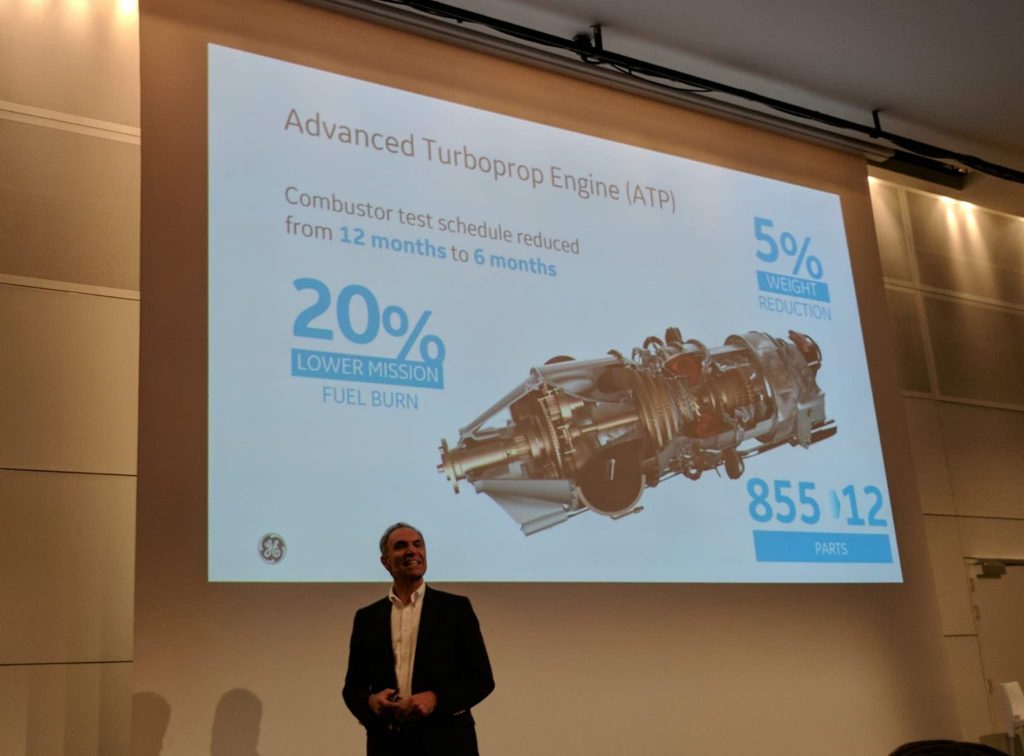GE Additive has announced a series of Customer Service Centers across the globe and Mohammad Ehteshami, Vice President, Additive Integration, GE Additive reveals plans for a new metal 3D printer.
$15 million Customer Experience Center in Munich, Germany
Coinciding with the first day of the 2017 Hannover Messe, GE announced plans to accelerate the use of additive manufacturing by opening a series of Customer Experience Centers (CRE). The first center will be located in Munich and allow, “current and potential customers to experience first-hand designing and producing components using additive manufacturing.”
The Munich CRE will feature up to 10 metal 3D printers from Arcam and Concept Laser and use, “GE’s cloud-based Predix operating platform to enable industrial-scale analytics and GE Edge devices, which provide real-time control and monitoring.” According to GE, “Customers will benefit from hands-on training and instruction at the facility, covering additive design, machine operations and support.”
A second GE Customer Experience Center will be announced later this year. Robert Griggs, general manager of the Customer Experience Centers for GE Additive said, “The concept of customer experience centres is an integral part of GE Additive’s strategy to expose and engrain the additive technology to manufacturers worldwide.” The Munich CRE will employ up to 50 GE Additive employees.

New power bed fusion metal 3D printer
Speaking to an audience that included Greg Morris, of Morris Technologies, at the Materialise World Summit in Belgium, Ehteshami gave further details of how GE are using 3D printing and what is on the horizon.
Morris is now a strategist on Ehteshami’s team and received a warm round of applause from the crowd at the Materialise World Summit for his company’s work on 3D printing the first LEAP engine fuel nozzle.

Ehteshami said that “very soon,” GE will bring a new 3D printer to market. Developed with the capabilities added from the acquisition of Concept Laser and Arcam, this metal 3D printer will be a powder bed fusion machine with a build size that can be measured in meters. Ehteshami did not give further details but speculation around the conference was that the new machine may feature at the forthcoming RAPID event in Pittsburgh, Pennsylvania.
However, given that GE’s 3D printing acquisition is only at around the 100 days mark and timeframes in industries such as aerospace are generally measured in years, “very soon” may be a relative turn of phrase.
Ehteshami also highlighted other aspects of GE’s approach to additive manufacturing and the company’s plans to sell 10,000 industrial 3D printers outside the company – including with the loans available from GE Capital. A further 1,000 industrial 3D printers will be required internally.

Since the acquisition by the U.S. company GE have reported a number of sales of Concept Laser 3D printers to the U.S. military, including the first reported purchase by the U.S. Navy of a Concept Laser M2 Cusing machine in February 2017.
Design for Additive Manufacturing
Internally, GE categorise additive manufacturing into 3 categories. Level 1 is component thinking, level 2 is systems thinking and level 3 involves tearing down the product and designing for additive manufacturing (DfAM). Level 3 thinking is exemplified by projects such as the Advanced Turboprop Engine (ATP).
The first engine in the ATP series, the GE93 will move to an advanced testing phase in Q3 2017. The development cycle of 4 years has decreased to 2.5 due to the use of additive manufacturing, furthermore the need for structural casting has been removed.
Cost savings through the use of additive manufacturing at GE are forecast at $1 billion over the next two years according to CEO Jeff Immelt. Revenue generating activity from 3D printing at GE will also come from the development of the AP&C metal powder for additive manufacturing facilities that come with the Arcam acquisition.
When questioned about the cost of producing the LEAP engine fuel nozzle, Ehteshami explained that GE think about this in two ways. Firstly, consideration is given to the cost of making the nozzle in an alternative manner – for the fuel nozzle additive was the only option. Secondly, parts such as the LEAP engine fuel nozzle are often made under contract by suppliers while for GE a joint venture -CFM International – with Safran Aircraft Engines, was established to supply the 19 nozzles used in each engine.

3D Printing Industry readers have nominated GE Additive for a 3D Printing Industry Award. Voting is currently underway here, the winners will be announced at our event on May 20th.
Also, subscribe to our free newsletter for all the latest news about additive manufacturing and follow our active social media accounts.
Featured image shows GE Additive posters at Formnext 2016. Photo by Michael Petch.



